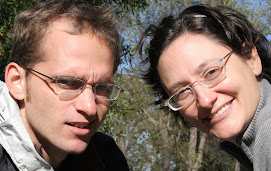Whatever rumors you’ve heard about South Asian driving – they’re true. Bideshi 1 and I have now ridden several buses hither and yon across the country, and can confirm their veracity. Most have been dirty and overcrowded. People, parcels, and sometimes even livestock jam the seats and aisle. The distance from seat-back to the back of my seat is often shorter than the distance from my knees to the back of my seat.
Recently after boarding a bus, Jen clambered over a mass of people and luggage to her seat, sank down with some relief, put her feet on the floor, and stepped on a chicken. The chicken was not happy and told her so. Jen was not happy and told the owner so. The owner was sorry for the inconvenience and graciously jammed the chicken down among some packages on the other side of the bus. The chicken still wasn’t happy, but nobody much cares what a chicken thinks. So it was all good. Eventually even the chicken resigned to fate and shut up.
On most trips we’ve been seated somewhere in the mid to posterior region of the vehicle. There we can typically look out a grimy window and see the country side pitching and yawing pleasantly from side-to-side as we charge along. Always there is the sound of horns honking and engines roaring. Frequent accelerations in all directions hint that the path is strewn with obstacles that must be either avoided or overrun, but the precise nature of the obstacles has remained a mystery – until recently.
On our last journey we had the privilege of sitting in the very front-most seats of the bus, where I at least, had a clear view of the road ahead. It was very illuminating. The road was strewn with rickshaws, motorcycles, pedestrians, potholes, speed bumps, livestock, and other cars, vans, and trucks in all sorts of shapes and sizes. In places it was very narrow - sometimes less than two trucks wide. Faced with the view of so much traffic competing for the roadway I found myself wondering how we would get anywhere. But then, I realized that there is a system – that in fact there exists a well defined rule to order the flow of traffic – namely the vehicle with the most momentum and loudest horn has the right of way. All other vehicles yield in order of descending momentum and horn volume.
Slow truck ahead? No problem. Just lay on the horn, swerve into the other lane (yes the one full of oncoming traffic) and gun it. That sedan headed straight for us at sixty k? No problem. It’ll move. Rickshaws in the road? A few cows? A little courtesy toot should do. Don’t bother with the brakes, they’ll move… Things do get interesting when two vehicles of comparable momentum and horn volume find themselves barreling in opposite directions down the same lane while the other lane is occupied by a slow moving truck, three rickshaws, and a motorcycle.
Thankfully there is a system here too. In every bus there is a copilot whose job it is to ride in the leading doorway on the left side of the bus and holler warning information to the driver and to persons outside the bus. The louder the copilot yells, the more relevant his comment to the safety of the intended audience. Faced with the situation of two vehicles of comparable momentum (say our bus and another bus) careening towards each other, the copilot will yell, “Oy, rickshaw!” to the driver, then “OY OY OY!!!” with his head out the window to the rickshaw. The driver continues to lay on the horn and the gas. When he’s passed the truck (and both buses are maybe three meters from utter mutual annihilation), the driver begins his swerve back into the other lane - the rickshaws had better be gone by now! The swerve is timed so that the leading right edges of both buses pas within about two feet of each other. In the rare circumstance when the oncoming vehicle actually had to apply some brake, this distance is reduced to six inches or so.
In employing these rules for efficient motorized travel, it is important to remember a few points that may be counter intuitive to some bideshis. First, just because the vehicle is designed to be driven on the left side of the road doesn’t mean you should restrict yourself to only half the road. Oh no. Efficient travel requires the whole thing. Second, just because it isn’t paved doesn’t mean you can’t drive there. Road too narrow? Use the gravel shoulder (never mind that it’s only three feet wide and there’s a twenty foot drop to the rice paddy below). Third, remember the road signs have been put there for the amusement of those passengers wishing to engage in a little missile-hurling practice. Signs should therefore bear no relevance whatsoever to any decision made by the driver.
With these things in mind one can see that, not only is it possible to travel the congested roadways of

No comments:
Post a Comment